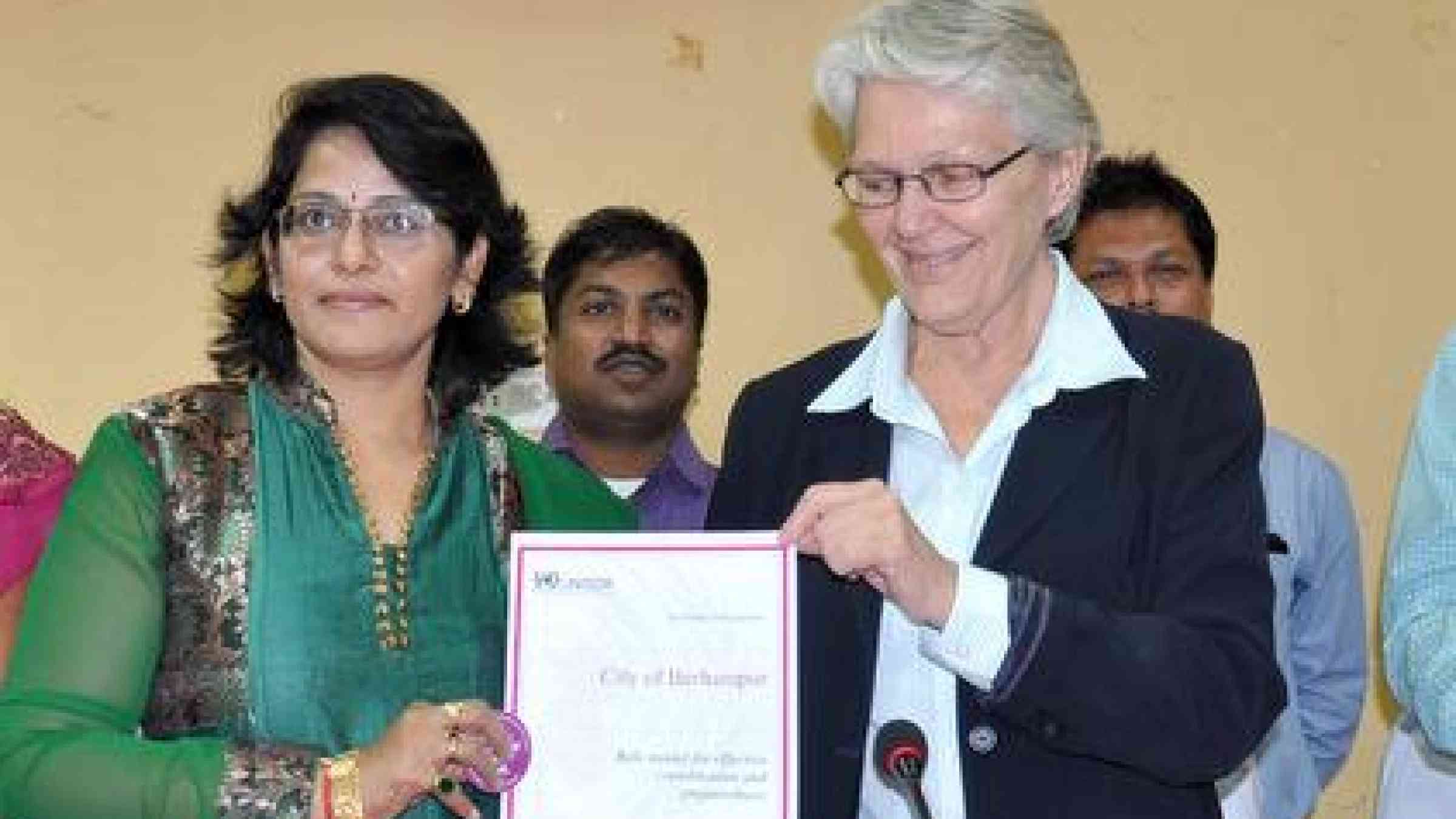Local leaders pinpoint key to early warning success

Berhampur, INDIA, 24 December 2013 – Local leaders in cyclone-hit Odisha said their successful early warning ahead of the recent Cyclone Phailin was down to good information that was delivered on time and acted upon quickly.
On a tour of cyclone-ravaged Ganjam district, the Head of the UN Office for Disaster Risk Reduction (UNISDR), Ms Margareta Wahlström, heard that 30,000 people had been evacuated in less than 30 hours.
The District Collector of Ganjam, Mr Krishan Kumar, said the prompt movement of people from villages within 5km of the coast was crucial in dramatically reducing the number of casualties.
“It was (initially) hard to convince some people in the coastal areas to move out. We started the evacuation process on October 11 at about 4pm before Phailin struck (at 9pm the following day),” Mr Kumar said.
“The team effort of our district personnel, who toiled hard round the clock before the cyclone struck and after the disaster, made possible the quick restoration.”
With an exposed coastline of 480km, Odisha’s authorities have invested considerably in reducing the vulnerability of communities living close to the sea.
The Berhampur Municipal Commissioner Ajit Kumar Mishra explained how the system had worked so well: “We requested all the 40 councillors to help evacuate the people from the 254 slum pockets immediately after the meteorological department forecast about the cyclone.
“The accurate prediction helped us prepare for the cyclone well in advance and the councillors played a key role in disaster management during and after the cyclone.”
Ms Wahlström presented a certificate of recognition to the Mayor of Berhampur, Ms K. Madhavi, praising the municipality as a role model for effective disaster coordination and preparedness.
Berhampur has been a member of UNISDR’s Making Cities Resilient for two years and the presentation ceremony was an opportunity to acknowledge the municipality’s efforts to make its city safer and more resilient.
After such a severe storm, however, the cyclone-hit areas face a long path to recovery. The economic impact has been enormous. Heavy rains after the storm caused significant flooding, which led to extensive agricultural losses.
The impact on livelihoods is particularly serious as 82 percent of Odisha’s population lives in rural areas and many coastal villages were thriving fishing communities.
Despite the impact and challenges ahead, Ms Wahlström, on her tour of Ganjam district, was impressed with the progress of rehabilitation after Phailin. “A lot of development has taken place within only two months of the cyclone. It is clear from the damaged structures in the affected areas how severe the cyclone was,” she said.
Almost all major roads were cleared within 48 hours of the cyclone. Emergency services, including the Odisha Disaster Rapid Action Force backed by the National Disaster Response Force, promptly supplied relief to many people in need.
Ms Wahlström heard from many local people, including several in the fishing village of Gopalpur, how they managed their disaster risk.
Accompanied by state officials, the UNISDR Head also visited a multi-purpose cyclone shelter and held discussions with the vice-chancellor of Berhampur University Deepak Kumar Behera.